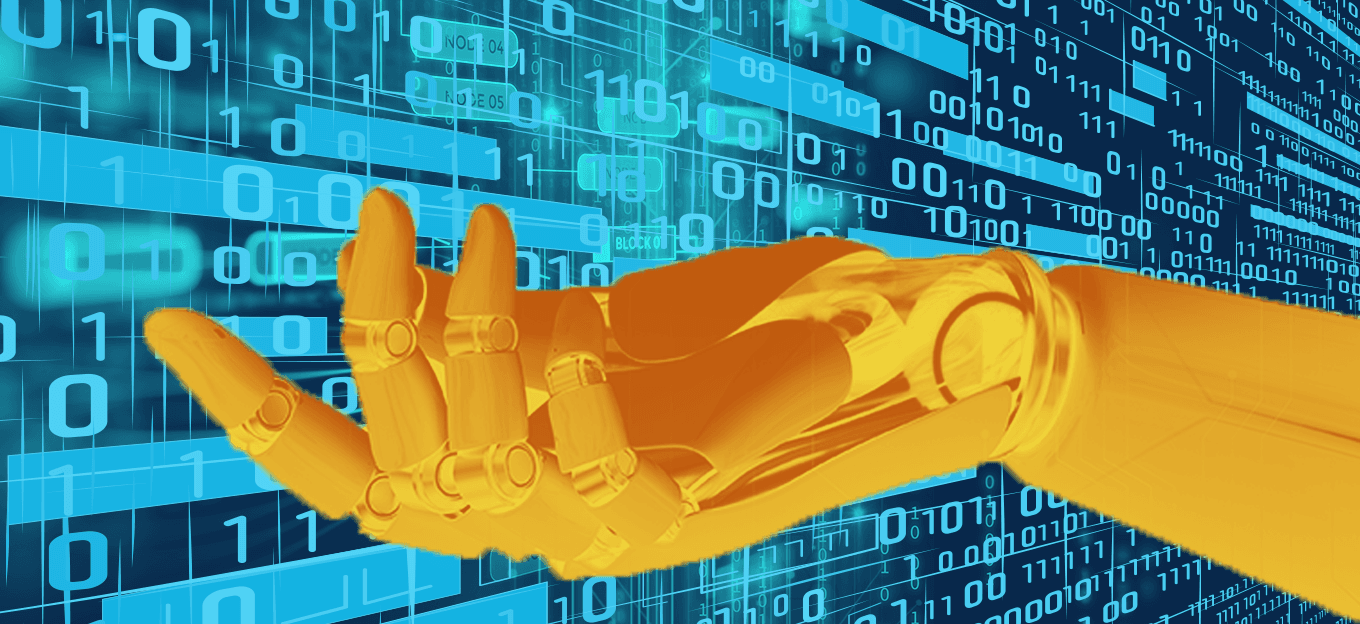The Application of Data-Driven Algorithms in Machine Learning
The Application of Data-Driven Algorithms in Machine Learning
- Last Updated: March 14, 2025
Cogito Tech
- Last Updated: March 14, 2025



Conceptual Analysis Of Machine Learning
Machine learning as a concept is related to enhancing a computer’s ability to learn using algorithms and neural network models and perform various tasks faster and more efficiently. Machine learning or ML helps in building models by using data or data sets to make decisions. It can be used for streamlining decision-making and executive performance in organizations. The term was coined in 1959 by Arthur Samuel, who was from artificial intelligence and computer gaming and hailed from the US.
Conceptually, ML or Machine Learning mimics the brain cell interaction model, biologically found in humans. During brain activity, when neurons communicate with each other, those, in turn, enable humans to perform various functions and tasks with ease, without requiring any other external form of support. Like the neurons in the human brain dissect each task as per the situation, in ML, the data is utilized as per various algorithms to predict, categorize, and represent to solve a complex problem and come up with a solution.
For a machine learning algorithm to produce high-value output, the availability of quality training data sets is a must!
The neural network models in machine learning are also based on Dr. Donald Hebb’s theory in The Organization of Behavior. Some notable contributions in formulating the concept of machine learning are based on the progressive implementation of evolutionary works of Arthur Samuel of IBM in the 1950s, who developed a computer program. The computer program involved alpha-beta pruning in measuring the chances of winning by each side in the game of checkers. Following this came the custom-built machine Perceptron, developed by Frank Rosenblatt in 1957, built exclusively for image recognition, leading to the nearest neighbor algorithm developed by Mercello Pelillo in 1967 for basic pattern recognition.
Machine Learning Algorithms and Models
Machine learning is based on calibrated functioning of algorithms and models. In simple words, an algorithm can be termed a simple process of utilizing structured or unstructured data to produce an output. At the same time, a machine learning model signifies the combination of program and procedure (algorithm) of using the program to reach the result to complete the desired task.
An algorithm is a formula through which a prediction is made; machine learning models are the wider aspect of the output produced after implementing an algorithm. Thus, it would be valid to quote that machine learning algorithms lead to ML models and not vice versa, technology-wise. To understand what ML algorithms do, let us see the models in Machine learning first.
Machine learning models are classified as per three broad models:
- Supervised learning: In supervised learning, in an uncertain scenario, evidence is computed to make predictions from a known set of data (input) and known responses of data (output) to develop new data or data set as a response. Supervised learning further uses techniques like classification and regression to come up with other machine learning models.
- Unsupervised learning: Unsupervised learning involves arriving at inferences from the input data without labeled responses from the hidden patterns with intrinsic data sets or structures.
- Reinforcement learning: In the reinforcement learning model of machine learning, based on trial and error approach, a sequence of decisions are made in a complex environment. Depending upon the outcome of a decision taken, there are rewards and penalties which help in bringing out the responses, eventually.
Now to elaborate on what a machine algorithm does, let us take an example of clustering-based machine learning algorithm K-means. Several clusters are taken into consideration, and k is taken as the variable. The Center or centroid of each cluster is identified, and a data point is defined on its basis. In several iterations, data points and clusters are re-identified, and once all centers are defined, data points are aligned to each cluster, having proximity to the cluster center. This algorithm performs exceptionally on training data that helps in sorting the complex tasks of audio detection and image segmentation for various AI programs.
<!-- wp:paragraph --> <p>Another aspect that makes machine learning a progressive field to explore and evolve as per the business demand is its need for processing data. Training data in various forms serves as the fundamental basis in machine learning. From detecting objects for security purposes to predicting trends in business, efficient and high-performing algorithms are essentially data-centric; the more accurate the data set, the more accurately an algorithm will produce output.</p> <!-- /wp:paragraph -->
<!-- wp:heading --> <h2 id=" />Algorithms Powered By Data In Machine Learning
In the physical world, wherein the majority of aspects that humans interact with are based on dynamic relationships with various intangible data, the human mind performs many simple data-driven calculations every day. Similarly, computation is based on data or labeled training data in machine learning, which helps an artificial intelligence (AI) based program work to add value. The usage of algorithms is far more reliable and high velocity than writing the code of a program to automate a process or conduct deep findings on a large set of data.
Machine learning algorithms are mathematical methodologies that produce a set of results with the help of the data provided. The importance of data is, thus, fundamentally central in the process of machine learning. The efficiency of an AI program powered by ML depends on the quality of training data fed into the algorithm’s code. Inaccurate data sets can downgrade the performance too.
For an ML algorithm to produce high-value output, the availability of quality training data sets is a must. A training data set is annotated or elucidated data developed as per the objective of the AI application.
<!-- wp:paragraph --> <p>Primarily, two types of data power how the algorithms of machine learning work.</p> <!-- /wp:paragraph -->
<!-- wp:list {" />
- Manual data labelling
- Automated data labelling
- AI-assisted data labelling
There are some key differences in automated vs. manual and ai assisted data labeling. In manual data labeling, crowd force labels raw data as per shared guidelines or techniques defined to attach the label. While in automated data labeling, the training data is labeled by a program, and its accuracy is checked before it is loaded for execution. And, AI-assisted data labeling requires both automated procedure and human effort to produce quality training data.
Application of Data Based Algorithms In Real World
The algorithms and techniques are applicable across industries and economic sectors. In the age of digital technologies and data-driven ecosystems, complex requirements to face challenges of efficient data creation and development, in the fields like smart city, cybersecurity, smart healthcare, social media, and business, ML is also enabling constant data structuring and processing of available data for better decision making, improving performance and enhancing business sustainability.
In the health sector, AI programs are performing tasks powered by highly usable training data. The data enables health apps such as twentybn is helping customers track the progress of their health training program by detecting Objects, Actions, Attributes, Audio-visual input, Speech input, Neural network, Speech output, Body control, etc. This, in turn, is helping the AI-enabled app decode complex tasks such as :
- Understand the scene
- Understand spoken language
- Understand objects and actions
- Generate spoken language by chatbot
- Control the assistant’s body
- Understand human poses
- Link visual concepts to words etc.
- Behaviour
In sectors like finance, machine learning algorithms are helping detect future investment opportunities for companies; meanwhile, for the government sector, ML algorithms are helping deal with frauds, identity thefts and improve the efficiency of public works by simply processing complex data from multiple sources. Additionally, as the amount of data is increasing to humongous volumes, machine learning or ML is adding value by using complex data sets and helping business verticals tackle numerous challenges of the future.
Endnote
Ideally, machine learning is used to handle complex computational tasks involving enormous amounts of data and no static formula to bring out the result. Over the years, as the study and evolution have continued in machine learning, business sectors such as medical, energy production, automotive, aerospace, manufacturing, and finance have benefitted from its models. Machine learning models and algorithms are helping solve sector-specific problems and provide futuristic industry-wide solutions by object detection, credit scoring, trade forecasting, DNA sequencing, and predictive maintenance.
In the coming years, as the data continues to grow and the demand for variable data climbs further, we can hope to see many other tasks getting executed using AI programs powered by machine learning algorithms with models that help in reading and handling data and fuel balanced sustainability for the global enterprise sector.
The Most Comprehensive IoT Newsletter for Enterprises
Showcasing the highest-quality content, resources, news, and insights from the world of the Internet of Things. Subscribe to remain informed and up-to-date.
New Podcast Episode

The State of Cybersecurity in IoT
Related Articles





